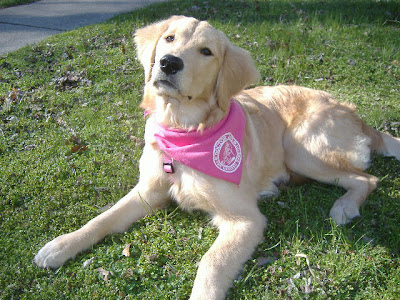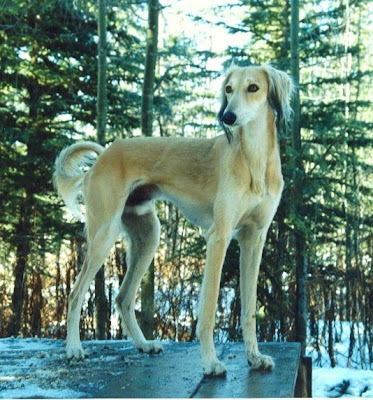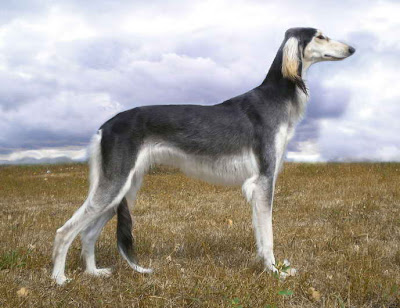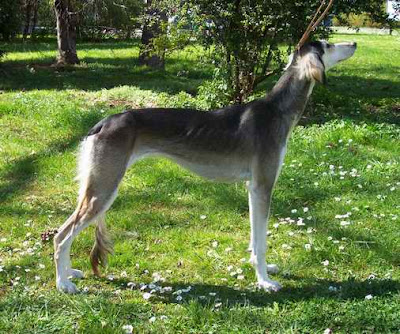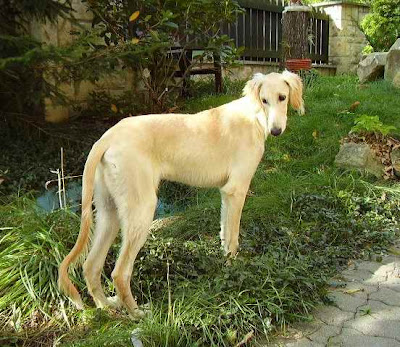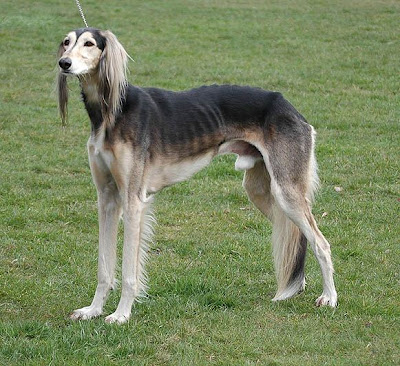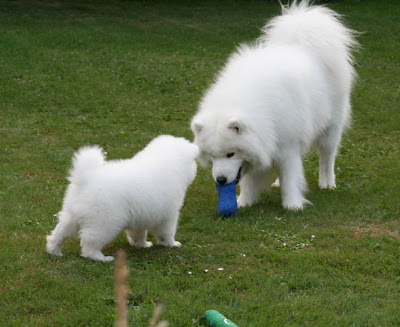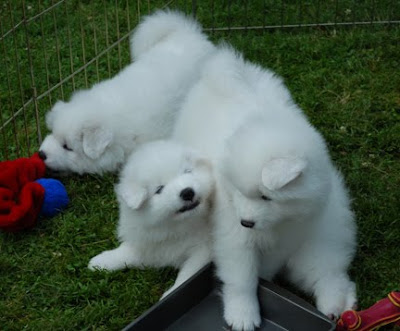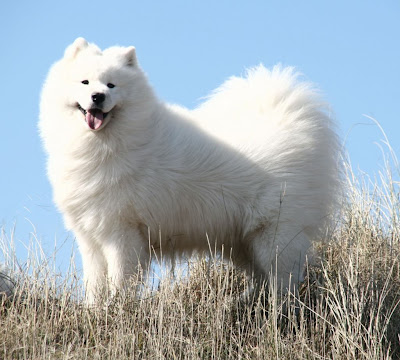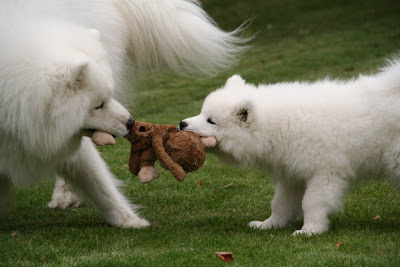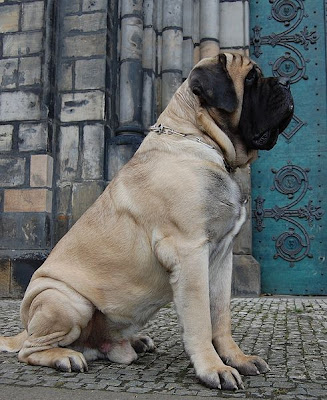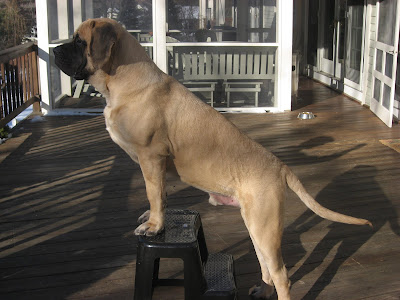Monday, May 31, 2010
Compare Dog Insurance Carefully
Check to see if your insurer excludes or charges a higher premium for your breed. Review any age limits for coverage. Some insurers start coverage right away, while others require the pet to be 8 weeks old. Some plans don't cover pets over 8 years old while other have no age limit.
Make sure you understand what you are purchasing. Some policies cover only accidents. Most policies cover accidents & illnesses, while others offer comprehensive coverage, including preventive care (checkups, vaccinations, neutering, etc.) along with accident and illness coverage.
Review the deductibles, co-pays and caps on coverage. Some insurers will pay 80% of the costs for treating your pet's illness, while others will pay 100%. Make sure you select an insurer that provides the coverage you need.
A recent survey of the top pet insurance companies is provided below:
Customer Satisfaction Ratings
Ratings of 1 - 10 (with 1 lowest and10 highest satisfaction)
U.S. Insurers
PetPlan: 9.39
Embrace: 9.09
Petfirst: 8.72
Trupanion: 8.63
PurinaCare: 8.4
Pet Assure: 7.75
Pets Best: 7.57
Hartville/ASPCA: 5.81
VPI: 4.85
Pet Partners (AKC): 4.78
PetCare: 3.94
Canadian Insurers
Petsecure: 9.37
Vetinsurance: 8.63
PurinaCare Canada: 7
PC Financial: 4
PetCare Canada; 3.94
Policy costs will vary from provider to provider, based on the breed and the speciific plan chosen. Some packages are comprehensive, including annual checkups and vaccinations, spaying/neutering and death benefits. Some plans only cover accidents and illness.
Gary Weiss has worked in the financial services industry for over 25 years, specializing in risk management and risk mitigation.
To compare dog insurance policies and for more information about dog insurance in general please visit my website http://www.squidoo.com/comparedoginsurance
Article Source: http://EzineArticles.com/?expert=Gary_Weiss
Sunday, May 30, 2010
How to Get Cheap Dog Insurance
You can get a great deal on cheap pet insurance. Just because it's cheap, it does not mean that you can't get the best. If you're able to see an insurance provider that gives you the same benefits as that of the regular pet insurance but at a cheaper rate, then you should make the most out of this. In fact, by getting a cheaper dog insurance, you can save up to 5%.
There are some pet insurance providers that even allow you to save more if you apply for their services through their website. A number of dog owners do this because as they save more on the insurance, they get to spend more on their dogs' luxuries.
It is very important to have pet insurance too because one is not sure on what could happen to the beloved pet the next day. In fact, statistics show that dog owners save a lot whenever they treat their pets after a road accident if they have insurance.
Generally, insurance providers offer different levels of coverage to dog owners. You can choose the cheap dog insurance which responds best to your budget and to your dogs' needs. You can even get a great cheap dog insurance deal that is tailored specifically to your pet. If you opt to buy these online, you can even get discounts.
A frequently asked question on cheap dog insurance is whether there is an age limit. Older pets can still consult with their veterinarians and have the expenses covered no matter how old they are. Three are even some insurance providers that help their clients look for their animals just in case they get lost.
Finally, even if it's cheap dog insurance, the terms and conditions also apply. Read the benefits and the stated conditions so that you are on the same page as the insurance provider. You can even compare quotes from these insurance providers and get the best one for you, and of course for your dog.
Discover where to find cheap dog insurance online. Learn where to get cheap dog insurance quote online.
Article Source: http://EzineArticles.com/?expert=Ricky_Lim
Top Dog Insurance Considerations
If you are thinking about purchasing dog health insurance for your four-legged friend, we have the top dog insurance questions to ask yourself. Dog insurance is not a one-size-fits-all topic, and your specific pet and individual circumstances are the most important factors to consider when shopping for a dog insurance policy. Before you choose a pet insurance policy for your dog, ask yourself the following questions:
Do I have the financial resources to cover a large vet bill if my dog is seriously injured or sick?
This is the top dog insurance consideration. If your pet becomes seriously ill, or is injured in an accident, vet bills can easily add up to thousands of dollars. If you don't have the resources to pay for treatment, you may want to consider dog health insurance. You need to be aware of the details of your pet health insurance policy, as many require you to either pay a deductible or pay the entire bill and wait for the insurance company to reimburse you. Many dog owners simply choose to put their money in a savings account instead, as the money can accrue interest and be used for any needs that their pets may have.
Do I have a high-risk dog?
Many pure bred dogs have a higher risk for certain diseases or genetic conditions. Weimaraners and German Shepherds, for example, have a good chance of developing hip dysplasia as they get older. This is a painful and potentially costly condition. Be aware that many dog insurance policies don't cover breed-specific genetic conditions such as this, so you want to read the exclusions of any policy carefully before you decide to buy.
Your dogs temperament can also be a factor to consider. If you have a high-strung puppy, or a dog that likes to chew on strange things, top dog insurance policies can cover treatments for accidental injuries or the surgery that might be needed to remove a foreign object from Fido's stomach. This happens more often than you might realize, and the bill for intestinal surgery can easily reach $4,000 or more.
How old is my dog?
Just like health insurance for humans, dog insurance premiums generally increase as a dog gets older. If you have a young, healthy puppy, you might simply choose to enroll in a discount program. This is usually one of the least-expensive types of pet health insurance, and you simply receive a membership card that you can present for discounts on regular check-ups, vaccinations, and other covered services.
Older dogs may have more serious health considerations, and it is important to know that many of the top dog insurance policies do not cover pre-existing conditions. If your dog has ever been treated for a health issue in the past, you will need to ask if this specific condition will be covered by the insurance policy. If not, you might be better off using that savings account to cover your vet bills.
Has my dog ever been abused or mistreated?
Sadly, many animals are abused or neglected every day, and this can sometimes have a major impact on a pet's health. If you have adopted your dog from a shelter or rescue agency, it is important to find out as much as you can about the dog's previous living conditions. Dogs that were seriously malnourished or abused can have a higher risk of health problems that may not present themselves until much later. If you have a dog that has ever been in a situation like this, you may opt to carry a top dog insurance policy for at least a couple of years, just to be safe.
Every pet is different, and your dog may have additional considerations that make dog health insurance a good option for you. If you decide to purchase a dog insurance policy, read the fine print carefully to make sure you are getting the coverage that your pet needs. Top dog insurance companies should be willing to answer any questions you have about their policies, and you should get quotes from more than one provider to make sure you are getting the best deal for your money.
Halle Balle Dog offers informative exclusive articles on Dog Training and Dog Care. Be sure to take a few minutes to read Real thoughts on Top Dog Insurance for even more valuable insights on the subject of Pet Insurance.
Article Source: http://EzineArticles.com/?expert=Sasha_Rae
Saturday, May 29, 2010
Therapy Dog Training
If you would like to volunteer yourself and your pet dog please keep in mind that service training for therapy dogs is designed to help the dogs face environments that they are not familiar with.
Therapy dog training therefore, begins with strong obedience training. Any service dog must also be very well socialized. Training a service dog is designed to ensure that the dog experiences many things that do not occur normally at home. Things like elevators, escalators and strange sounds, such as beeping monitors and the high pitched whine of equipment like respirators.
It is also very important for the human part of the team. For the human handler the training is designed to train them to know which types of situations can arise while working with their dog and how to properly handle those circumstances.
The human handler should also prepare for the type of care facility and the situations they will encounter there when visiting with their pet dog.
Therapy dog training also requires that you confirm that your pet dog is healthy. A service dog must have its current inoculations, a current health certificate from a veterinarian and it must be visibly clean.
Service dog work is very dependent on good training. Both you and your dog must be prepared the possible situations you will encounter. However, if your are willing, to train yourself and your dog you will find it extremely rewarding to bring comfort and happiness to care facility residents, hospital patients and their families.
Once you have your dog socialized and ready for obedience testing contact Therapy Dogs International, Inc.. This is a volunteer organization dedicated to regulating, the testing and the registration of therapy dogs and their volunteer handlers for wherever therapy dogs are needed.
Cecilia Baird is a dog care specialist and dog lover who owns and operates http://economydogcare.com a web site providing economy dog info. Come visit our Free For Dog Lovers page http://economydogcare.com/free-for-dog-lovers/
Article Source: http://EzineArticles.com/?expert=Cecilia_Baird
Friday, May 28, 2010
Dog Training Courses - How to Become a Specialized Dog Instructor
A dog' s behavior could develop with qualified training supplied by specific training programs. Everyone will benefit from these courses: both pets and their proprietors. To be certain that you succeed in your attempt to become a professional instructor, you have to go to special training courses. They are short term courses but offer intensive education due to both theoretical and practical approaches. Here are some things you need to know if you are considering a career in this field:
• Decrease aggressiveness
Dogs may sometimes be aggressive. This one varies according to some aspects such as breeds, environment, dog-master rapport. If you' ll deal with such difficulties, certainly, dog training courses teach the needed strategies to reduce any dog aggressiveness.
• Improve submission commands
A trained dog will at all times listen to your commands. These time as well, there are particular strategies and methods that turn unmastered puppies into beautiful submissive animals. This matter is definitely based on dog psychology. Any of these days certified dog training courses explain how you will achieve this phase in puppy training.
• Eating issues and anxiety can be treated
Not all dogs are aggressive, on the contrary, there are dogs experiencing nervousness. This problem might produce adaptation impediments. Courses that you follow will help you resolve this problem with high efficiency. Puppies may occasionally suffer from digestive disorders. Puppy training courses have proved to be extremely helpful for this subject, too.
• Solve adaptation problems
Other pets may come across adaptation issues after a kitten or puppy are new members in his "family". Dog training courses provide options to assist your dog to better integrate.
• Rescue and guide dog trainings
This theme makes proof of the value puppies have in our lives. They might change dramatically other people' s destinies. Dog training courses provide the essential information for the identification and training of dogs in order to help certain disabled persons.
Dog training courses were initiated in order to provide all the required support to the people who aspire to be able to control their puppies behavior and who assume that qualified help is too expensive. Both dog and owner will benefit from the positive effects of these specialized courses.
If you' re attracted in a profession as a dog instructor, have the necessary information about these days dog training courses, pick the most suitable, cost-effective and competent one. They are extremely helpful for those who consider this niche a profitable business chance. In order to work you should get a certification.. Soon you will be able to enjoy your passion for pets and also you may earn cash.
Adrian is an editor for http://www.dog-training-courses.org/, a website that describes how efficient dog training courses are.
Article Source: http://EzineArticles.com/?expert=Adrian_F_Alexa
Wednesday, May 26, 2010
Therapy Dog Training - The Benefits of a Visiting Dog
Besides normal dog training, these dogs also need specialized teaching. They will learn how to behave around people that are going through therapy and how to provide them with comfort. If they need to provide this help to ill people, these dogs need much more than just a basic training. They will need to be able to do a number of things while being good companions.
Older people and kids are usually those that get therapy dogs to help them deal with their stay in hospitals. Both the dog and the handler will help the patient go through this hard period, by offering him activities and attention that will help.
Hospitals aren't the only places that can benefit from using therapy dogs on their patients. They can also provide great value in retirement homes, schools, nursing homes or mental institutions.
The training that is done on dogs that will be used for therapy derives from other types of trainings and modified, to make them fit the situations that can happen in a hospital. They will be taught to be nice with strangers and to enjoy sitting in their presence. In most cases, these therapy dogs will learn performances and tricks that most people will enjoy seeing.
You could use almost any breed to make a therapy dog, but in most cases breeds with higher temperance are chosen, due to their constant work with people they don't know.
There isn't one single method of training these dogs, but usually they will need to be certified before being allowed to get near patients to help them. Training and certification can be received from animal shelters or therapy dog training classes. Once the certification is received, you can start training the dog for therapy.
With a therapy training, the dog will learn to ignore noise, people that don't need therapy or any kind of hospital equipment. They also learn to do a few basic things or to help the patients do it. They are not service dogs though, so they can't do the same things.
These dogs are trained to help people by visiting them and giving them some company and joy. They are not trained to stay with them and help them with their tasks, so there is a major difference between therapy and service dogs.
People often need some therapy to recover, which can prove boring and repetitive. A therapy dog can provide some excitement in their daily routine that will improve their situation. It's been known to make people less lonely or depressed as well. It can distract them from darker thoughts that they might have.
A therapy dog can also make patients be more responsive, getting them out of their routine, making them less passive. Try to put yourself in the place of a bored patient, that suffers from pain, and imagine what a joy would a dog bring you, if he came to interrupt your boring routine.
There isn't a huge demand for therapy dog training, but it's been used for quite some time now in the treatment of patients.
Visit DoggyBehave.Com for more dog training tips and articles. Read our latest sitstayfetch book review.
Article Source: http://EzineArticles.com/?expert=Cristian_Stan
Saluki
They are 58–71 cm and 13–30 kg in weight. The overall appearance of the Saluki is one of grace and symmetry. Salukis are "sight" hounds which means they sight the quarry, run it down, catch and retrieve/dispatch it. There are two coat types evident in the Saluki gene pool: smooth and feathered. In both varieties males may range from 23 to 28 inches at the top of the shoulder with females measuring somewhat smaller.
A true Saluki retains the qualities of hunting hounds and may seem reserved and aloof. They learn quickly but can get bored with repetition, so training sessions should be short and varied. Sensitive and intelligent, the Saluki should never be trained using force or hard-handed methods.
They will "sing" (a high pitched howl, with oscillating volume) when they feel that something is wrong or when a member of the family is away for a long period of time. This "singing" can also be for bonding in the family (pack) group. Salukis have a fairly long life span, living an average of 13–16 years.
Salukis need plenty of exercise, but allowing one to run freely may mean that it will go on the hunt and never return. If chasing something, this dog will ignore its owner's calls. A good way to burn off a Saluki's energy is to go bike riding as it trots along beside you.Saluki Dog Club Directory
- Photo gallery, upcoming events details and news. Michigan, United States.
- An association of fanciers in the United States. Includes information on the breed, rescue organizations, breeder referrals, show results and a calendar of events.
- Club and breed history, activities, membership and rescue information, breeder referral and calendar of events.
- Photos, show results, and a breeder referral. California, United States.
- Information on the club and breed, news and publication advertising details. [Swedish and English]
- Sponsors an annual Saluki specialty. Past winners, upcoming show details, club contact and meeting information. Oregon, United States.
Tuesday, May 25, 2010
Saint Bernard
The St. Bernard is a very large dog with a large head. The largest recorded Saint Bernard was over 6 ft in length and weighed 310 pounds,although the average weight of the breed is between 140 and 220 lb (64–100 kg) or more and the approximate height at the withers is 27½ inches to 35½ inches (70 to 90 cm).The coat can be either smooth or rough, with the smooth coat close and flat. The rough coat is dense but flat, and more profuse around the neck and legs. The coat is typically a red colour with white, or sometimes a mahogany brindle with white. Black shading is usually found on the face and ears. The tail is long and heavy, hanging low with the end turned up slightly. The dark eyes should have naturally tight lids, with "haws only slightly visible".
Saint Bernard Dog Directory
- Kennel history, pictures, and show news. Norway.
- Breed description and news. Ossendrecht, The Netherlands.
- Kennel history, show news, breeding plans, and breed standard. Alberta, Canada.
- News, frequently asked questions, photographs, kennel history, pedigrees, and litter announcements. High River, Alberta, Canada.
- A small show kennel with photographs, pedigrees, and links. Jackson, Tennessee.
- Breed history, show news, and links to other related sites. Ireland.
- News, pictures, and litter announcements. United Kingdom.
- Photographs, breed overview, information on upcoming litters, and health articles. Oregon.
- Kennel history and philosophy, news, and pictures. Kent, Washington.
- Contains show results, photographs, news, and breeding plans. Erda, Utah.
- Pictures, pedigrees, and news. Cleveland, Ohio.
Monday, May 24, 2010
Dog Training Certification Tips
There are a lot of pet owners everywhere. Most of these pets are dogs. This furry four legged animal is man's best friend. A lot of pet owners are starting to feel the need of having them go through training with professional trainers.
Training dogs have become a possible job that will need to be filled in the coming years. To be a qualified for this kind of job you will need dog training certification. Knowledge on how to train canines is becoming a great job that anybody can benefit from, as long as they have their dog training certification and love for furry animals.
To get your qualification, you have to get enrolled a certification program. Finding a good training program can be quite hard. To help you find a reliable dog training program, I have listed a few things that a dog training course needs:
A dog training program should about the history on how to train canines. Some of the activities have been found to be dated back at early 1900's. It discusses methods and ways they were trained during the earlier eras.
The program should also include discussions on how they behave. This usually includes body language, behavioral genetics, developmental behavior, characteristics of different breeds, and social development. A dog trainer with a dog training certification that includes being well versed with different behavior of dogs will likely get hired immediately.
This is quite important. Any trainer should know how to train dogs so that the animal can interact with its owners. A well trained dog should be able to follow simple commands of its owner. If a dog behaves badly, punishment should be given. If the animal does well, a reward is important.
A good dog training program should also include the business part. It should teach trainers how to train others in the future and maintain the business well.
As dog trainer you will need the knowledge of how to structure a class. This will include what materials you will need, how to choose your client, what advice you will need to give to dog owners, and a knowledge on how to motivate other dog handlers.
Usually a good training program can go on for weeks or months. It usually consists of various trainings on how to handle dogs. There are programs that are short lived. Some of it only lasts a day or two. In this span of time, a dog trainer will probably not learn anything helpful at all.
Have you considered getting a job working with dogs then check out this great Dog Training Certification resources and articles and get on the road to a new rewarding career.
http://www.dogtrainingcertification.org
Article Source: http://EzineArticles.com/?expert=Sarah_Wells
Sunday, May 23, 2010
House Dog Doors
House dog doors are a major convenience for pet owners. They will not only make your pet' s day easier they will make your day easier. If you install one of these in your home, your pup can come and go as he pleases, you don' t have to be there to let him in to eat and out to go to the bathroom.
With dog house doors, having to get up to let your pet in and out is over. This means more freedom for both of you, and lowers the chances you' ll work each other' s nerves. When looking for pet house doors, there are a few things to look for - and a few to watch out for
House Dog Doors Features to Consider
First and foremost, you will need to decide what size of pet house doors your dog or dogs will need. Too big of an opening can be an invitation to burglars and other troubles, such as wild animals. You certainly don' t want a dog door big enough for a bear. It wouldn' t be likely to attract any bears, but it would be big enough for humans to easily crawl through, and humans are the most dangerous pests in the animal kingdom.
Measure your pet' s height from the top of his shoulders, right behind his front legs, and his width at the chest. This will give you an idea what size of house doors you need for your pet, and what height it should be installed at. Choose a size of door so your dog can come and go freely, and won't have to squeeze through uncomfortably, but no bigger than that. Find the "sweet" spot so Fido can come and go at will - but no one, and nothing, else through your pet house doors.
There are many different designs of house dog doors available, ranging from those that are cut into an existing door, those that are cut directly into walls, and those that are cut into sliding glass doors.
The least expensive house doors have plastic or aluminum frames and an acrylic flap. The flap is normally held in place by a magnet, to keep the weather out while letting your dog pass in and out freely.
At the higher end of the dog door spectrum, there are self - locking, one-way, electronic 'key' activated doors, and even infrared - activated doors. These high tech doors, with their more energy-efficient seals and secure locks, can cost as much as $1,000.
House Dog Doors and Home Security
Self locking dog doors can be found for less than one hundred dollars. They will keep out all sorts of unwanted intruders, such as pets that aren't yours, raccoons, snakes, and ill-intentioned humans. These doors are activated by a microchip on your dog's collar.
Bigger pets present a number of problems when shopping for these doors. Firstly the door will tend to be more expensive. Secondly, larger doors tend to also mean that they're more likely to be big enough to fit a human through them.
Burglars sometimes pry open house dog doors in order to reach inside and unlock the people door, so make sure your pet house doors are not within reach of your human house doors. Alternatively, if you cannot avoid placing these doors near human doors, use a type of lock that cannot be easily reached or unlocked from below.
Be aware of the dangers of letting your pup come and go freely. Once your pet is outside, and unattended, it can be stolen, even if your yard is fenced in. Also, a fence may not be deterrent enough to keep your pet from escaping and running free. Dogs have been known to leap over fences or to dig under them, or slip through gaps in the fence. You may thus want to be selective about giving your furry friend too much freedom to come and go.
Make sure you select the right House Dog Door for your pet. You will find a large selection of Dog Products and articles at Dog House Market
Article Source: http://EzineArticles.com/?expert=Johnathan_Livingston
The Benefits Of Getting An IR Dog Door
The shielding barrier associated with an IR dog door is important to not only enclosing dogs, but also protecting the security of a home. Many pet owners have delay the installation of a dog door because they are not completely sure on the idea of having an uncontrolled entrance to their residence. While dogs can conveniently come and go as they choose, wild animals like raccoons, curious cats and stray animals are kept outside. Preventing these kinds of circumstances, an infrared locking dog door with barriers becomes an good solution.
An IR dog door is is made of of a self-closing magnetic cover that allows only a dog wearing a collar with an attached digitally coded infrared key to gain access to a home. Since the door only opens with this key, entry to the home is restricted to appointed pets. The collar key is powered by a CR2 lithium battery. The pet door also requires four AA 1.5V alkaline batteries in order to work.
The collar key sends out a digitally coded infrared signal so that when dogs come near of the door (about 24 inches), they are able to enter with the door locking behind them. Consumers are also able to set the length of time that the door will automatically latch. Depending on the IR pet door you choose, a consumer may encounter a variety of locking systems, including In Only, In and Out, Out Only or Locked.
Depending on the model and brand, the typical IR dog door may come with a door (interior, exterior with flap, and sometimes a tunnel), locking barrier; one key, one key ring, CR2 lithium battery for collar key, mounting materials, 2 four-way locking handles, warranty card and instructions.
Benefits of Using an IR Dog Door
Pet owners like pet doors because they give their dogs the freedom of coming and leaving as they please. They also don't have to think about letting the dog in and out of the home or forgetting to let them in from the cold. When pet owners and dogs are not on the premises, a consumer may place a barrier (offered with most models) to prevent any entrance into the home.
Since the opening to the home is magnetic - rain, loss of heat, and drafts do not pose a problem when compared to the traditional dog flaps. The magnetic locks effectively keep meandering cats and wild creatures out of the home.
Possible Disadvantage of IR Dog Doors
Some pet owners are worried that the cost of an IR dog door will cost an arm and a leg. However, most units are priced around $185 to $300. Pet owners are also worried about the size of an IR dog door, as most models work well with dogs between 30 and 100 pounds. Smaller breeds may work best with a cat door with infrared lock.
Since most IR pet doors require AA batteries, some consumers do not want the hassle of constantly changing these items. Thankfully, there are some models that work with an A/C adapter, which uses the batteries as backup. Some consumers have also reported about the noisiness of an IR dog door, which has a knack of creating a banging sound when the magnets and plastic come together. When installing, it is best to avoid attaching to doors located close to bedrooms.
Natalie Williams is the creator of PetDoors101.com. Visit her site to get more free tips on selecting the right pet door for your pet.
Article Source: http://EzineArticles.com/?expert=Nat_Williams
Friday, May 21, 2010
Samoyed
The Samoyed dog takes its name from the Samoyedic peoples of
Samoyeds have a lot of vitality, and well cared for Samoyeds are known to retain their youthful, energetic spirit well into their senior years. The average lifespan for a Samoyed is 12 to 16 years. Being a working breed, they have excellent stamina, and without daily exercise they will become bored and/or depressed, which can lead to excessive barking, destruction, weight gain, irritability, and escape artist behavior. Samoyeds are typically a hardy dog, but do have their share of health concerns. They share a common resemblance with an American Eskimo dog. They may also be mistaken for Husky dogs or Japanese Spitz by inexperienced people
Size : Males typically weigh between 20-32.5 kg (55-71 lbs) and stand at a height of 54–60 cm (21–24 in) , while females typically weigh 17–25 kg(40-55 lbs) and stand at a height of 50–56 cm (19–22 in) .
Eyes : Samoyed eyes are usually black or brown and are almond in shape. The expression is often described as "intelligent". Blue or other color eyes can occur but are not allowed in the show ring.
Ears : Samoyed ears are thick and covered with fur, triangular in shape, and erect. They are almost always white but can occasionally have a light brown tint, usually around the tips of ears.
Tail : The Samoyed tail is one of the breed's more distinguishing features. Like the Alaskan Malamute, their tail is carried curled over their backs; however, unlike the Malamute, the Samoyed tail is held actually touching the back. It should not be a tight curl or held "flag" like, it should be carried lying over the back and to one side. In cold weather, Samoyeds may sleep with their tails over their noses to provide additional warmth. Almost all Samoyeds will allow their tails to fall when they are relaxed and at ease, as when being stroked or while eating, but will return their tails to a curl when more alert.
Coat: Topcoat is straight and wiry, and the undercoat is dense and short. Can be white, cream, or white with light brown.
Training : Training can be a challenge and needs to start early. Variety in the drills is key, as Samoyeds can get bored if asked to do the same task over and over and refuse to do anything. Screaming, shouting or hitting will not get the dog's respect, in fact it will produce the opposite effect. The dog will need to see you as both an authority figure and a friend. It must be trained to come to you when very young.
Samoyed Dog Club Directory
- Specialty breed club licensed by the American Kennel Club. Objectives and purposes, currently and upcoming events and rescue activities.
- Including Yapper Online newsletter.
- The association is comprised of breeders and pet owners. The site is full of information on Samoyeds, the Club, and links.
- Objectives, activities and history of this specialty breeders club.
- The Samoyed Association of Finland. Pages in Finnish and English.
- An AKC licensed group formed by breeders whose purpose is to protect the breed. News, next events and photo gallery.
- Information about their activities like rescuing and placing homeless Samoyeds, breed promotion and upcoming events.
- Provides information about their members, objectives and next events.
- Group of Samoyed owners who are involved in breeding for showing, obedience, herding and agility.
- Samoyed breed section of the CIRN, Italian Northern Breed Club.
Thursday, May 20, 2010
English Mastiff
With a massive body, broad skull and head of generally square appearance, it is one of the largest dog breeds in terms of mass. Though the Irish Wolfhound and Great Dane are taller, they are not nearly as robust.
The body is large with great depth and breadth, especially between the forelegs, causing these to be set wide apart. The AKC standard height (per their website) for this breed is 30 inches (76 cm) at the shoulder for males and 27.5 inches (70 cm) (minimum) at the shoulder for females. A typical male can weigh 150–250 pounds (68–110 kg), a typical female can weigh 120–200 pounds (54–91 kg).
The former standard specified the coat should be short and close-lying (though long haired mastiffs, called "Fluffies", are occasionally seen) and the color is apricot-fawn, silver-fawn, fawn, or dark fawn-brindle, always with black on the muzzle, ears, and nose and around the eyes. (See Coat Colour Inheritance below.)
The greatest weight ever recorded for a dog by the Guinness Book of World Records was for a mastiff from England named Zorba (1989), at over 343 pounds (156 kg). Zorba stood 37 inches (94 cm) at the shoulder and was 8.25 feet (251 cm) from the tip of his nose to the tip of his tail. Zorba set this record in November 1989, when he was 8 years old, and about the size of a small donkey. Although there is a widely circulated claim that a St. Bernard named Benedictine weighed 357 lb (162 kg). This figure is based on "successive studies", rather than direct measurement of a living dog. The largest direct measurement of Benedictine's weight was 336 lb (152 kg).
English Mastiff Clubs by country
| Country | Club Name |
|---|---|
| Australia | Mastiff Club Of Victoria Inc. |
| Austria | Molosser Club Austria |
| Belgium | Mastiff Club Belgium |
| Canada | Canadian Mastiff Club |
| Canada | Mastiff Fanciers of Western Canada |
| Czech Republic | Moloss Club CZ |
| Denmark | Dansk Mastiff Klub |
| France | Club français du Bullmastiff et du Mastiff |
| Germany | Old English Mastiff Club Deutschland e.V. |
| New Zealand | New Zealand Mastiff Club |
| Norway | Norwegian English Mastiff Club |
| Spain | Club Espanol de los Molosos de Arena |
| Sweden | Svenska Mastiffklubben |
| United Kingdom | Old English Mastiff Club |
| United Kingdom | Mastiff Association |
| United States | Garden State Mastiff Fanciers |
| United States | Mastiff Club of America |
| United States | Mid-west Mastiff Fanciers |
| United States | Pacific Northwest Mastiff Fanciers |
| United States | Pacific Southwest Mastiff Club |
| United States | Lone Star Mastiff Fanciers |
| United States | Redwood Empire Mastiff Club |
Data refer : http://en.wikipedia.org/wiki/English_Mastiff
Tuesday, May 18, 2010
The Many Types of Mastiff - Which is the Right Pet For You?
Mastiffs or molosser-type dogs are popular among those who want a large and dependable dog that can get along well with children and other animals. In the past, these dogs were bred for a variety of purposes. At present, such breeds have been known to be great as family dogs.
This variation in purpose for breeding has led to the many types of mastiff that you will find today.
The Original Mastiff Most of the characteristics of the English Mastiff are present in the other molosser-type or mastiff breeds. These dogs are endowed with large and strong bodies and a natural protective instinct. Yet, these qualities are balanced with a calm and affectionate temperament, which makes them good as guard dogs and as family dogs.
The Long Coats The Tibetan Mastiff is among the oldest, largest, and heaviest breed of mastiff. Also, because it originates from Central Asia, they possess coats which are long and thick to protect them from the cold climate.
The Pyrenean Mastiff, on the other hand, also has a long coat. However, its similarity with the Tibetan Mastiff ends there. This is a breed of dog which knows the extent of its abilities and has no desire to show off. Because of this, Pyrenean Mastiffs usually go along pretty well with other people and animals as long as their master is not in any danger.
Best as Guard Dogs The French Mastiff is one of the smaller Mastiffs.It is for those who live in smaller spaces like apartments. This breed, in spite of its size (which is still impressive, mind you), is still considered to be the better choice than the English Mastiff if you need a reliable guard dog.
The Neapolitan Mastiff, the wrinkly Mastiff, is also a good guard dog. These dogs are more territorial than the English Mastiff so you should effectively limit its territory so it doesn't get aggravated needlessly.
What the Spanish Mastiff lacks in affection, it makes up for in its loyalty and protectiveness. This extremely territorial breed is among the best breeds to assign as the guardian of your home.
The Brazilian Mastiff might be too much for most people to handle. They won't get along very well with other people and animals. Obedience training is necessary to control this breed and curb their tendency to attack strangers on sight.
The Athletic Companion Finally, the Anatolian Mastiff is endowed with slender and agile bodies instead of what is usual for Mastiffs. Because of this, their bodies are fit for speed and endurance. This should be perfect for people who want to exercise and run around a lot with their pet dog.
Steve Blake is a mastiff breed researcher and enthusiast. His love for this breed has prompted him to build and operate his own website. You can learn more about all the types of mastiffs and sign up for the popular 10-lesson mastiff mini-course by visiting MastiffMaster
Article Source: http://EzineArticles.com/?expert=Steve_Blake
Monday, May 17, 2010
Tibetan Mastiff Training - How Do Tibetans Train Their Mastiffs
In Tibet, Tibetan mastiffs had been considered sacred for many years.
Their large bodies, large heads and long hair make them look very much like a lion and they can be just as dangerous as one. Tibetan mastiffs are strong and aggressive dogs if trained to become so.
Tibetan mastiffs are the greatest herds guard dogs and are also believed to be great predictors of earthquakes.
The Tibetan mastiffs are a loyal breed of dogs. They are not born aggressive even though they have the body and strength to become very dangerous if trained this way.
Tibetans have been training them for centuries to become effective in herd guarding. Tibetans have been growing herd animals through the ages. The greatest enemy of their herds has always been the wolf, so they have trained their mastiffs to fight of wolves.
Training mastiffs to be "wolf killers" involves not feeding them enough, exposing them to harsh weather, keeping them hungry, tired and frustrated. Growing a mastiff in such cruel conditions cause him to become vicious, angry, bitter and extremely dangerous.
This cruel training continues when the dog is taken out to the wilderness to be placed in a dry well and fed only a few pieces of raw meet per day. The wild animals, especially the wolves smelling the meet would come and steal their food, but after a short while the Mastiff would start using his strength and anger to fight them.
All the bitterness turns into aggressiveness and cruelty as the mastiff finally attacks the wolf, fighting for his food.
Throughout this process up till this point the Tibetan mastiff are being kept in solitude, with no other dogs around.
Once he is released into a group of mastiffs, they acknowledge him as a stranger and attack him. The poor mastiff has to fight for his life. He learns that the only way to survive, eat and not be killed is to fight.
In order to emphasize it, Tibetan trainers used to start feeding the mastiff pieces of raw wolf's meat when he very hungry, so he acquires the taste and begins to connect the taste of wolf meat with being fed and surviving. This method of training makes the wolf become a natural enemy of the mastiff.
Wolfs are the biggest threat for herding animals in Tibet. This has been a good reason to train the mastiffs to hate wolves and by that become the most efficient, fierce herd guardian.
Tibetan mastiffs have been breed with other kinds of dogs, so pure breed Tibetan mastiffs are rare these days.
Generally, mastiffs are very loyal to their owners but very dangerous to strangers. The training process described above is not being used very often any more, which makes me, for one, very happy.
This beautiful breed of dogs deserves a pampering way of life. Living in a caring home and having a loving family they grow to become gentle giants that would still make excellent guardian dogs for their families and their environment.
Dave is a Mastiff breeder and an experienced dog trainer. For a limited time you can get FREE 10 part Mastiff care course by visiting EZ Mastiff Care.com
Article Source: http://EzineArticles.com/?expert=Dave_Barzila

